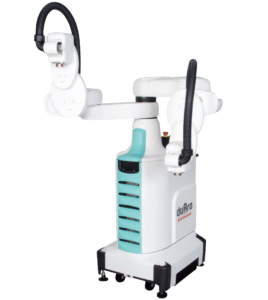Industrial robots have made dramatic advancements over the last 20 years. Huge leaps in both hardware and software performance have made them faster, more durable, and much easier to integrate. To understand today’s industrial robots, it is beneficial to understand their evolution.
Developed over 50 years ago, primarily for use in the automotive industry, robots were once limited to performing relatively simple tasks. Generally, they were used to automate the most physically exerting, repetitive, dirty, and dangerous jobs. Even with their early limitations, the first generation of industrial robots were still considerably more flexible than hard-tooled transfer lines and cam-based assembly automation. Therefore, robots were often utilized to automate tasks that could take advantage of this programmable, multi-position, flexibility.
Robots today are considerably more sophisticated than they were only five years ago. Some robots can even monitor their own performance, recommend needed spare parts, and send you a text message when they need preventative maintenance performed!
Other improvements include built-in vision and force sensing technologies that allow robots to safely and reliably complete tasks previously reserved for humans. Coupled with an ever-expanding range of force-sensing, motorized and “soft” gripper technologies, End-Of-Arm-Tooling (EOAT) can now be designed to handle almost any product without damage. Robot manufactures have teamed up with many end-effector manufacturers so that integration of these devices is extremely simple – literally “plug and play.”
Very recently, with the advent of redundant safety controls hardware, powerful software and real-time 3D workspace scanning sensors, robot safety has also been taken to the next level. With a proper safety risk assessment, large powerful robots and humans can now work together side by side.
The newest industrial robots are also much easier to set-up, initialize, and program. The control software is much more intuitive utilizing icon-based graphic interfaces and lightweight touch screens. Creating a program and teaching the robot positions can be accomplished by moving the arm to the desired location and pressing a button.
All of these new features have been added to modern robots, reducing the time and cost that it takes to integrate them into a rapidly increasing number of global industries. Contact Keller Technology to learn more about the latest and most technologically advanced robotic solutions to your most challenging manufacturing problems.

